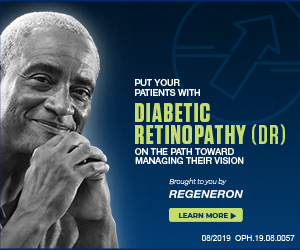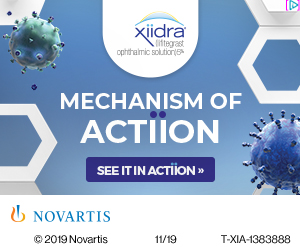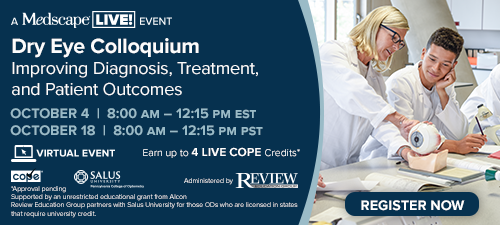
A
weekly e-journal by Art Epstein, OD, FAAO
Off the Cuff: Finally, The Truth Comes Out: Vision Care Plans Are Not Our Friends
I will keep this one short, but unfortunately, not so sweet. On top of the worsening COVID outbreak, civil insurrection and political turmoil, the recently announced changes to VSP’s formulary and provider terms were an unwelcome shot off the bow of independent optometric practice. Using language reminiscent of the airlines—in response to overwhelming customer demand we will be cutting service, upgrades, and available oxygen in our main cabins—VSP has assured us that these newly announced additional cuts in reimbursements, and what constitutes direct interference in the doctor patient relationship, were designed to increase patient access and keep patients in our chairs. Not so fast, VSP. For the many independent practices that are hurting right now from the outbreak and the subsequent economic turmoil, VSP’s ability to win contracts is likely not high on the list of concerns. Keeping the doors open and staff and patients safe is far more pressing. Many practices have already been reduced to scrounging for the crumbs of what’s left in refractive eye care, and I imagine it doesn’t matter much to most what plan the patient has when they come in for their annual “free” vision exam. The resources that VSP has available to weather the current economic storm are many orders of magnitude greater than any individual VSP providers’ ability to survive. You would think that the VSP that was created by optometrists for optometrists would be exploring ways to support providers during this difficult time, rather than making a difficult situation even more difficult. The reality is that despite the lip service, it would be in everyone’s best interests if VSP and the profession both recognize that we are all in the same boat and now is not a good time to rock it. I have been saying this for a long time, and I fear that for a growing number of us, it may now be too late. If you have not embraced medical eye care, you are on a rapidly sinking ship to nowhere. Optometry has moved on and refractive eye care is rapidly becoming more consumer than profession driven. Economics will hasten its demise, but automation and technology will surely seal the coffin. The COVID outbreak isn’t abating any time soon. Expect rough seas ahead for at least the next year.
|
|||||
 |
||
| Assessing the Ocular Surface Microbiome in Severe Ocular Surface Diseases | ||||
There is growing evidence for a critical role of the microbiome in ocular health and disease. Researcher performed a prospective, observational study to characterize the ocular surface microbiome (OSM) in four chronic ocular surface diseases (OSDs) and healthy controls. Sterile swabs were used to collect samples from each eye of 39 patients (78 eyes). A sterile technique and multiple controls were used to assess contamination during DNA extraction, amplification and sequencing. Concurrent use of topical antibiotics, steroids and bandage contact lenses (BCLs) was documented. Despite the low biomass of the ocular surface, 47/78 (60%) eyes sampled had positive sequencing reads. Researchers observed that half of patients (8/17, 47%) had distinct microbiomes in each eye. Healthy controls had a Lactobacillus/Streptococcus mixture or significant Corynebacterium. Staphylococcus predominated in 4/7 (57%) patients with Stevens-Johnson Syndrome (SJS) in at least one eye, compared with 0/10 healthy controls. Interestingly, 8/11 (73%) eyes with SJS were using BCLs, including 4/5 (80%) eyes dominated by Staphylococcus. Lax eyelid syndrome (LES) and dry eye disease (DED) patients had similar OSMs, with Corynebacterium being the most prevalent bacteria. Alpha diversity was higher in controls and ocular graft-vs-host (oGVHD) patients compared with the other OSDs. |
||||
SOURCE: Zilliox MJ, Gange WS, Kuffel G, et al. Assessing the ocular surface microbiome in severe ocular surface diseases. Ocul Surf.2020;S1542-0124(20)30114-2. |
||||
 |
||
| Selective Laser Trabeculoplasty vs. Topical Medications for Step-up Treatment in Primary Open Angle Glaucoma: Comparing Clinical Effectiveness, Quality of Life and Cost-effectiveness | ||||
The aim of this study was to investigate the clinical effectiveness, health-related quality of life (HRQoL) and cost effectiveness of selective laser trabeculoplasty (SLT) compared with topical anti-glaucoma medications in step-up treatment of patients with primary open angle glaucoma (POAG). Seventeen POAG patients with suboptimal IOP control despite pre-existing topical medications were subjected to adjunct SLT (50 applications 180 degrees) or second-line medical therapy. Current medications were continued, and patients were followed up for six months for degree of intraocular pressure (IOP) lowering. HRQoL was assessed using Glaucoma Quality of Life 36-item (GlauQoL-36), Assessment of Quality of Life-7D (AQoL-7D) and Vision related Quality of Life (VisQoL). Costs involved were calculated and compared to the effect (IOP reduction) achieved in each arm. Ten patients were in the SLT group and seven in the topical medication (MED) group. Mean baseline intraocular pressure (IOP) was 18.90 ± 3.48mmHg in SLT group and 15.57 ± 2.23mmHg in MED group. Mean reduction of IOP was 4.3 0± 1.64mmHg in SLT group and 2.71 ± 2.56 mmHg in MED group at six months, which was not statistically significant (p=0.14) between the two groups. All the HRQoL questionnaires did not show significant changes in the groups or between groups when compared baseline with six-month post treatment (p-values ranging from 0.247 to 0.987). For every 1mmHg reduction in IOP, cost involved in MED group (RM53.61) was 165% of the cost involved in SLT group (RM32.56). Investigators wrote that this study showed that SLT was as effective clinically and tolerable as topical anti-glaucoma medications, and was possibly more cost effective in the step-up treatment of patients with POAG at six months follow-up.
|
||||
SOURCE: Yong MH, Che Hamzah J. Selective laser trabeculoplasty vs. topical medications for step-up treatment in primary open angle glaucoma: comparing clinical effectiveness, quality of life and cost-effectiveness. Med J Malaysia. 2020;75(4):342-8. |
||||
 |
||
| Retinal Neurovascular Impairment in Patients with Essential Hypertension: An OCTA Study | ||||
This observational cross-sectional study consisted of 199 right eyes from 169 nondiabetic essential hypertensive patients, divided into groups as follows: group A, 113 patients with hypertensive retinopathy (HTNR); group B, 56 patients without HTNR; and a control group of 30 healthy subjects to investigate retinal neurovascular structural changes in patients with essential hypertension, Peripapillary retinal nerve fiber layer (RNFL), radial peripapillary segmented (RPC), ganglion cell-inner plexiform layer (GC-IPL), and superficial (SVP) and deep (DVP) vascular plexus density at the macula (6 × 6 mm2) were measured by optical coherence tomography angiography (OCTA). DVP density was significantly reduced in groups A and B compared to the control group (group A DVP, p=0.001; group B DVP p=0.002). GC-IPL, RNFL thickness, and RPC and SVP density in group A were significantly decreased compared to the control group or group B (all p<0.05). In hypertensive patients, GC-IPL and RNFL thickness were negatively correlated with severity of HTNR (GC-IPL, r=-0.331, p<0.001; RNFL, r=-0.583, p<0.001) and level of home blood pressure monitoring (HBPM) (GC-IPL, r=-0.160, p=0.050; RNFL, r=-0.282, p=0.001) and were positively correlated with SVP (GC-IPL, r=0.267, p=0.002; RNFL, r=0.361, p<0.001) and RPC density (GC-IPL, r=0.298, p<0.001; RNFL, r=0.663, p<0.001). Among subjects with grade 2 or 3 retinopathy, the superior RNFL was significantly thinner in patients with high HBPM level than in those with normal HBPM level (grade 2, p=0.016; grade 3, p=0.006). Researchers wrote that reduction of retinal vessel density and RNFL thickness was observed in patients with HTNR and was inversely associated with level of HBPM. |
||||
SOURCE: Peng Q, Hu Y, Huang M, et al. Retinal neurovascular impairment in patients with essential hypertension: an optical coherence tomography angiography study. Invest Ophthalmol Vis Sci. 2020;61(8):42. |
||||
| News & Notes | ||||||||
| Treehouse Eyes Opens Six Additional Locations Treehouse Eyes, the country’s first company dedicated exclusively to myopia management, announced the opening of six new centers. The company is bringing its proprietary system of myopia management into select primary care practices across the country. Co-founder Gary Gerber, OD, said, “We’ve opened 19 locations in the last year after opening our first two flagship centers four years ago. That was of course way before the ‘new normal’ of COVID-19. It’s been incredibly gratifying that even with all the changes COVID has brought to our industry, demand for our proprietary brand of myopia management is stronger than ever. This is because parents are more aware that reduced time outdoors and increased screen time isn’t beneficial for their kids and doctors are getting more questions about what can be done for increasing myopia. Learn more. |
||||||||
| Kubota Announces Research Agreement with The Research Foundation for SUNY for Wearable Myopia Control Device Kubota Vision and The Research Foundation for the State University of New York entered into a research agreement to conduct and carry out the testing and characterization of an investigational, wearable myopia-control device based on Kubota Glasses technology to further evaluate its effects on choroidal thickness and axial length. Kubota Vision conducted a clinical study in early 2020 with an electronic tabletop optical projection device that embodied Kubota Glasses technology. The results demonstrated that axial length decreased with the application of projected myopically defocused images in the test eye compared with the control eye, which has not been reported in the literature. In June 2020, the company initiated a proof-of-concept clinical study to validate the concept of a wearable myopia-control device based on Kubota Glasses technology. A wearable prototype is expected to be available by the end of 2020. Read more. |
||||||||
|
||||||||
| GUNNAR Launches Cruz Kids Blue Light-blocking Glasses GUNNAR Optiks introduced Cruz Kids blue light blocking glasses for children ages four to eight, eight to 12, and 12-plus. The glasses provide protection against the short and long-term effects of digital eye strain and exposure to artificial blue light emitted from digital screens. Patented lens technology helps enhance visual focus at close range, blocking blue light and reducing dry eyes. The glasses feature a smudge-resistant lens coating, durable nylon frame material and hingeless frame design for flexibility. Read more. |
||||||||
| NCCVEH at Prevent Blindness Names Newman Recipient of Bonnie Strickland Champion for Children’s Vision Award The National Center for Children’s Vision and Eye Health at Prevent Blindness announced Logan Newman, NBCT, ABO, MS Ed, program developer and NYS certified science teacher at the East High School (Rochester, N.Y.) Vision Care Program, is the recipient of the sixth annual Bonnie Strickland Champion for Children’s Vision Award. Newman, a former US Navy medic with training as an optician, was selected for his innovative, educational and vocational approach to vision and eye care for disadvantaged and underserved youth in Rochester. Under Newman’s direction, local volunteer eye care providers perform refractive examinations in the Rochester City schools for students who do not pass their school-based vision screening. Newman and his team of student-opticians have provided more than 100 clinics for eyeglasses—including eyeglass selection, fitting and dispensing—throughout Rochester City schools. Read more. |
||||||||
|
Optometric Physician™ (OP) newsletter is owned and published by Dr. Arthur Epstein. It is distributed by the Review Group, a Division of Jobson Medical Information LLC (JMI), 19 Campus Boulevard, Newtown Square, PA 19073. HOW TO ADVERTISE |


